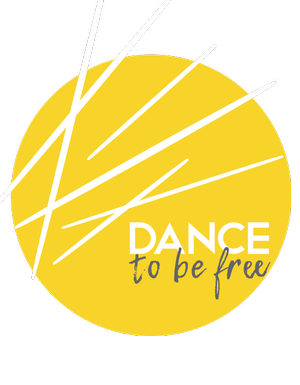
Frequently asked questions.

How does a prison get involved with DTBF?
1. Send us an e-mail and let us know of your interest.
2. We mail a complimentary set of Dance To Be Free workout DVDs—11 classes, 60 minutes each)—for the prison staff and recreation department to review before implementing program. If approved, the foundation is for them to be viewed one or more times per week by prisoners so they can start dancing.
3. If the DVDs generate interest, Dance To Be Free collaborates with the prison to schedule a live Teacher Training program with the prison. DTBF brings our original curriculum, music, journal prompts and DVDs for each training.
4. Inmates are certified as Dance To Be Free dance instructors which allows graduates to sustain the program themselves. DTBF returns to each prison for numerous trainings where we certify new students while working with our original trainees, if they are still at the facility.
Why Prison?
"Dancing is seen as a reparative experience that directly contradicts the terror, helplessness and invisibility of trauma to enable survivors to reclaim ownership of their bodies and their lives." Bessel A. van der Kolk, MD
In addition to dancing being a healing experience for inmates suffering from PTSD (post traumatic stress disorder), recidivism is a core criminal justice concern. The Bureau of Justice Statistics states: “Nationally, 30% of adult offenders released from state prisons are re-arrested within the first six months of their release. Within three years of their release, 67% of ex-offenders return to prison.” Employment and community engagement are critical factors determining long-term success of released inmates. We aim to reduce the high rate of recidivism by addressing the root cause of why a recently released inmate would return to prison—unaddressed PTSD.
Power of Synchronized Dance
This quote sums up the mission of Dance To Be Free - "We have already seen and heard from the inmates at DWCF about how their social interactions have shifted since dancing together.”
"In our recent study, we found that synchronizing with others while dancing raised pain tolerance. It also encouraged people to feel closer to others." Bronwyn Tarr
Why Women in Prison?
Women are the fastest growing prison population. Read more on ACLU.org
What does complex trauma and PTSD have to do with it?
"Complex trauma describes both children’s exposure to multiple traumatic events—often of an invasive, interpersonal nature—and the wide-ranging, long-term effects of this exposure. These events are severe and pervasive, such as abuse or profound neglect. They usually occur early in life and can disrupt many aspects of the child’s development and the formation of a sense of self. Since these events often occur with a caregiver, they interfere with the child’s ability to form a secure attachment. Many aspects of a child’s healthy physical and mental development rely on this primary source of safety and stability." (nctsn.org)
In order to heal trauma that lives in the body, Dr. Bruce Perry, a trauma specialist says we need “patterned, repetitive, rhythmic somatosensory activity, literally, bodily sensing exercises. Developmental trauma happens in the body, where pre-conscious ‘implicit memory” was laid down in the primitive brain stem (survival brain) and viscera. Long before we had a thinking frontal cortex or ‘explicit memory’ function. The list of repetitive, rhythmic regulations used for trauma by Dr. Perry, Dr. Bessel van der Kolk, and Dr. Pat Ogden and others is remarkable. It includes singing, dancing, drumming, and most musical activities.”
Perry’s research confirms the results we are experiencing inside of our 13 prisons; whether we are dancing in maximum or medium security facilities our students are hungry for our alternative approach. For the most part they have been exposed to cognitive therapy which has its limitations due to the physical nature of trauma.
Rates and Cost of Recidivism
Nationally, 97% of the offenders in jail today will be released and then return to the communities from which they came. Statistics show that 30% of adult offenders released from state prisons are re-arrested within the first six months of their release. Even worse, within three years of their release from prison this increases to 67%, or two out of three, ex-offenders returning to prison." Project Hope Re-entry Initiative
The US spends $80 Billion a year on incarceration. The cost of recidivism outweighs the cost of programming!
Is my donation tax deductible?
Yes! Please use our Tax ID #: 47-4034630
Where is my money going?
Check out our Contribution Page.
See what the Women in Prison are saying about DTBF
Check out our Resource page for recommended reads, films, and educators.
